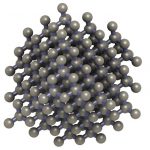World history is full of changes, but there has always been at least one constant – get as much gold as possible! Gold has built empires, maintained the world economy, and revolutionized technology. Not many people think about it, but in many ways, gold is critical to our way of life. Unfortunately, it’s not abundant. Gold that can no longer serve its original purpose must be recycled. When new sources of gold are discovered, none of it can be lost or wasted. That’s why humankind has continually evolved the process of extracting gold over the centuries to the point where every gold molecule in a sample of ore can be accounted for.
One of the earliest methods for extracting gold, salt cementation, was perfected through the Iron Age. When the Lydian Empire was standardizing the purity of the gold and silver they were using for the world’s earliest coinage, this was the method they relied on. When mined, gold is commonly merged with silver as an alloy called electrum. Although primitive, salt cementation could separate the two elements and yield gold exceeding 90% purity.
Most pre-19th century placer mining operations relied on mercury to retrieve the maximum amount of gold. By mixing mercury with crushed ore, even the finest particles of gold could be collected. After heat-treating the resulting slurry, miners could separate the mercury and gold for processing.
Gold cyanidation dates back to 1783 when Carl Wilhelm Scheele discovered that gold could be dissolved in an aqueous cyanide solution. In 1887, this knowledge was applied to gold mining with the development of the MacArthur-Forrest Process. As the most efficient gold extraction technique of the time, it gained widespread popularity in the mining industry, and is still used by some mines today.
Unfortunately, gold cyanidation was ineffective on refractory gold ores – which are made up of sulfide minerals that block the cyanide solution extracting the gold. An older, and very hazardous, extraction process called roasting was adapted and improved to work with this type of gold ore.
During the 19th century gold rushes, borax flux extractions became very popular because of its inexpensive ingredients, effectiveness, and ease of use in the fields. Like cyanidation, borax flux is still popular today, among individual prospectors and small-scale mining operations.
But, the most efficient method for gold extraction is froth flotation. Along with mechanized mining, froth flotation allowed the best recovery of gold from much lower grade ore than before – making it perhaps the most important mining industry innovation of the 20th century.
All of these gold extraction techniques utilize complex chemical reactions to work, but our infographic below should give you a basic understanding of the science behind each of their processes.












